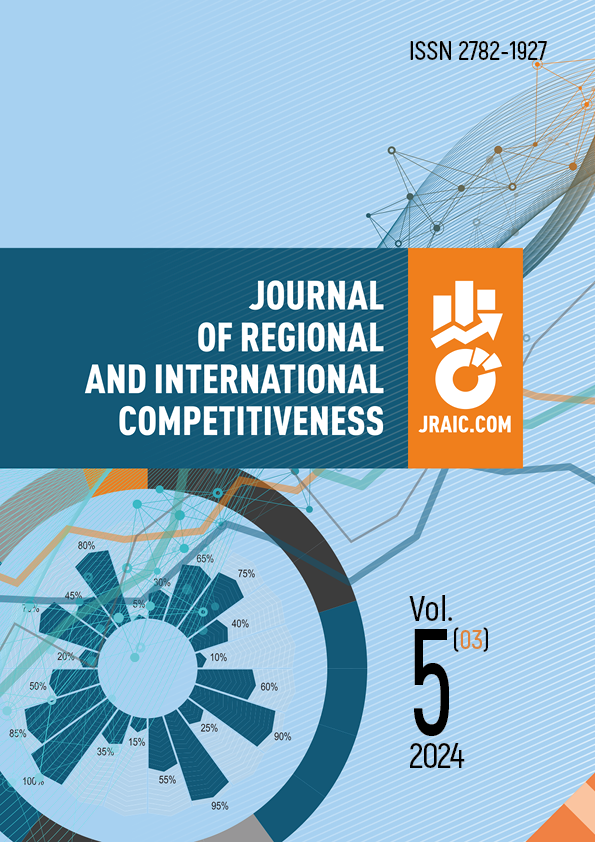Yaroslavl, Yaroslavl, Russian Federation
Yaroslavl, Yaroslavl, Russian Federation
Yaroslavl, Yaroslavl, Russian Federation
The fluent labour resources transfer within an integration association affects not only the level of wages or employment, but also causes complicated, complex consequences for the labour donor countries. The purpose of the study is to assess the impact of labour resource spillovers on the level of labour productivity in the EAEU countries. Using correlation analysis, the paper verifies the hypothesis of the reverse spillover effect associated with the return of labour migrants to their home countries. It contributes to labour productivity growth in the EAEU countries. The results show statistically significant (multidirectional) relationship between the variables under study – labour migration affects the level of productivity in the EAEU countries. Indeed, the growth of labour migration positively affects the level of labour productivity in Armenia and Belarus. However, in Kazakhstan and Kyrgyzstan those is negative one. The research results can be used to develop a strategy of socio-economic development of the EAEU countries considering the parameters of external labour migration.
labour migration; EAEU; spillover effects; labour productivity; correlation analysis
1. Panshin, I. V., Markhaichuk, M. M., & Yares, O. B. (2019). Interregional labor migration as a tool to increase regional labor productivity: The case of Russia. International Journal of Economics and Business Administration, 7(1), 125–137.
2. Laut, L. T., Pranizty, T. P. I., & Sugiharti, R. R. (2023). Does human capital spillover affect labor productivity? Journal of Socioeconomics and Development, 6(1), 36. Retrieved from https://doi.org/10.31328/jsed.v6i1.3759
3. Marois, G., Bélanger, A., & Lutz, W. (2020). Population aging, migration, and productivity in Europe. Proceedings of the National Academy of Sciences of the United States of America, 117(14), 7690–7695. Retrieved from https://doi.org/10.1073/pnas.1918988117
4. Imbert, C., Seror, M., Zhang, Y., & Zylberberg, Y. (2022). Migrants and Firms: Evidence from China. American Economic Review, 112(6), 1885–1914. Retrieved from https://doi.org/10.1257/aer.20191234
5. Calcagnini, G., Marin, G., & Perugini, F. (2021). Labour flexibility, internal migration and productivity in Italian regions. Structural Change and Economic Dynamics, 57, 308–320. Retrieved from https://doi.org/10.1016/j.strueco.2021.04.004
6. Bassie, H., Sirany, T., & Alemu, B. (2022). Rural-Urban Labor Migration, Remittances, and Its Effect on Migrant-Sending Farm Households: Northwest Ethiopia. Advances in Agriculture, 2022. Retrieved from https://doi.org/10.1155/2022/4035981
7. Antczak, B. O. (2023). Consequence of international labor migration in world practice. Journal of Modern Science, 53(4), 93–112. Retrieved from https://doi.org/10.13166/jms/176326 EDN: https://elibrary.ru/YBNGXP
8. Bongers, A., Díaz-Roldán, C., & Torres, J. L. (2022). Brain drain or brain gain? International labor mobility and human capital formation. Journal of International Trade and Economic Development, 31(5), 647–671. Retrieved from https://doi.org/10.1080/09638199.2021.2004209
9. Sarker, M. N. I., Salam, M. A., & Firdaus, R. B. R. (2024). Do female labor-migrated households have lower productivity? Empirical evidence from rural rice farms in Bangladesh. Growth and Change, 55(1). Retrieved from https://doi.org/10.1111/grow.12691
10. Statistical Yearbook of the Eurasian Economic Union; Eurasian Economic Commission. (2023). Moscow. Retrieved from https://eec.eaeunion.org/upload/files/dep_stat/econstat/statpub/Stat_Yearbook_2023.pdf (accessed 01.06.2024) (in Russian).
11. Data Bank Group. (2024). World Development Indicators. Retrieved from https://databank.worldbank.org/source/world-development-indicators (accessed: 01.06.2024).

















